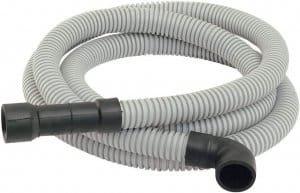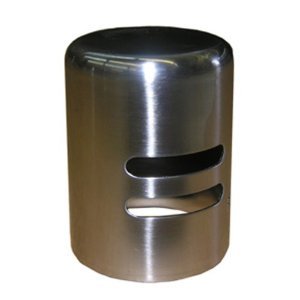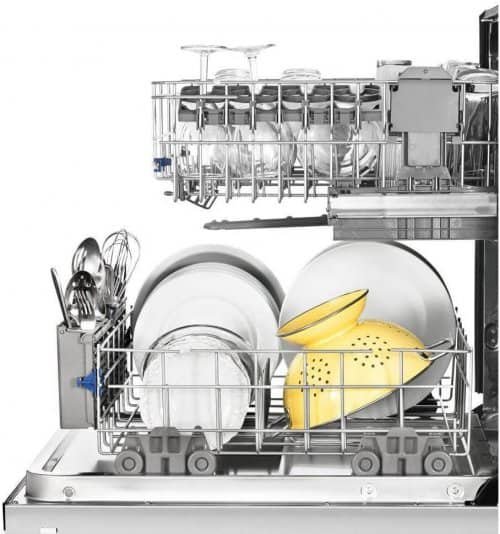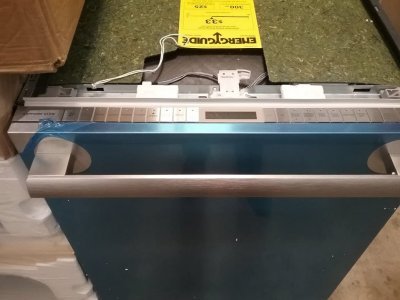A dishwasher is an invaluable appliance in the kitchen that saves us time and effort. However, encountering a dishwasher that won’t drain can be frustrating. Standing water at the bottom of the dishwasher not only affects its functionality but can also lead to unpleasant odors and unsanitary conditions. In this article, we will discuss several troubleshooting steps to help you fix a dishwasher that won’t drain.
Table of Contents
Common Reasons for a Dishwasher Not Draining
Before delving into the troubleshooting process, it’s important to understand the common reasons behind a dishwasher’s drainage issues. Some of the common causes include:
- Clogged drain hose
- Blocked drain basket
- Dirty or clogged dishwasher filter
- Clogged garbage disposal
- Malfunctioning air gap
- Faulty drain pump
- Defective drain solenoid
Now, let’s explore each of these issues in detail and learn how to fix them.
Checking the Drain Hose
The drain hose is responsible for carrying the wastewater out of the dishwasher. Sometimes, the hose can become kinked or clogged, leading to drainage problems. To check the drain hose:

- Turn off the dishwasher and disconnect it from the power supply.
- Locate the drain hose at the back of the dishwasher and inspect it for any kinks or bends.
- If you find any kinks, straighten the hose to ensure a smooth flow of water.
- Remove the hose and check for any clogs. Use a plumber’s snake or a wire hanger to clear any debris obstructing the hose.
- Reattach the hose securely and make sure it is properly connected.
Clearing Clogs in the Drain Basket
The drain basket prevents large food particles and debris from entering the dishwasher’s drain pump. Over time, it can become clogged, leading to drainage issues. To clear the clogs in the drain basket:
- Locate the drain basket at the bottom of the dishwasher. It is usually located near the back.
- Remove any visible debris or food particles from the drain basket.
- Rinse the drain basket with warm water to dislodge any remaining debris.
- Reinsert the drain basket securely into its place.

Cleaning the Dishwasher Filter
The dishwasher filter prevents food particles and debris from entering the pump and drain system. If the filter is clogged, it can hinder proper drainage. To clean the dishwasher filter:
- Consult the manufacturer’s manual to locate the dishwasher filter. It is typically located at the bottom of the dishwasher.
- Remove the filter carefully and rinse it under warm water to remove any debris.
- Use a soft brush or toothbrush to clean the filter thoroughly.
- Once clean, reinsert the filter back into its position.
Unclogging the Garbage Disposal
If your dishwasher is connected to a garbage disposal, a clog in the disposal can lead to drainage issues. To unclog the garbage disposal:
- Turn off the dishwasher and disconnect it from the power supply.
- Locate the garbage disposal unit under the sink.
- Insert an Allen wrench into the bottom of the disposal unit and turn it back and forth to loosen any clogs.
- Remove any debris or objects from the disposal unit using tongs or pliers.
- Once cleared, reconnect the dishwasher to the power supply and run a test cycle to check if the drainage problem is resolved.
Inspecting the Air Gap
The air gap prevents wastewater from flowing back into the dishwasher. If the air gap is clogged or blocked, it can hinder proper drainage. To inspect the air gap:

- Locate the air gap device on the countertop or sink. It is usually a small cylindrical or dome-shaped structure.
- Remove the cover of the air gap.
- Clean the air gap thoroughly using a brush and running water.
- Reattach the cover securely.
Verifying the Drain Pump
The drain pump is responsible for removing the wastewater from the dishwasher. If the drain pump is faulty or damaged, it can lead to drainage issues. To verify the drain pump:
- Turn off the dishwasher and disconnect it from the power supply.
- Locate the drain pump, usually at the bottom of the dishwasher.
- Inspect the pump for any visible signs of damage or blockage.
- Check the impeller of the pump for any obstructions. Use a toothpick or a small brush to remove any debris.
- If the drain pump appears to be damaged or non-functional, it may need to be repaired or replaced.
Testing the Drain Solenoid
Some dishwashers have a drain solenoid that controls the flow of water from the dishwasher to the drain. If the drain solenoid is defective, it can cause drainage issues. To test the drain solenoid:
- Refer to the dishwasher’s manual to locate the drain solenoid. It is typically found near the drain pump or motor.
- Using a multimeter, test the solenoid for continuity.
- If the multimeter shows no continuity, the drain solenoid may be faulty and require replacement.
Repairing or Replacing the Drain Pump
If none of the above troubleshooting steps resolve the drainage problem, the drain pump might need repair or replacement. It is recommended to seek professional assistance in such cases. A certified technician can diagnose the issue accurately and provide the necessary repairs or replacements.

How often should I clean the dishwasher filter?
It is recommended to clean the dishwasher filter once a month to prevent clogs and ensure optimal performance.
Can I use chemical drain cleaners to unclog the dishwasher drain?
No, it is not advisable to use chemical drain cleaners as they can damage the dishwasher’s internal components. Stick to the methods mentioned in this article to unclog the drain effectively.
Why does my dishwasher smell bad even after cleaning?
Persistent odors in the dishwasher can be caused by leftover food particles in hard-to-reach areas. Consider running a cycle with a dishwasher cleaner or using a mixture of vinegar and baking soda to eliminate odors.
Should I attempt to repair the dishwasher drain pump myself?
Repairing the drain pump can be complex and requires technical expertise. It is recommended to contact a professional technician for accurate diagnosis and repair.
How long does it take to fix a dishwasher drainage issue?
The time required to fix a dishwasher drainage issue depends on the underlying cause and the complexity of the repairs. Simple clogs can often be cleared in a short time, while more severe issues may require several hours or even a few days for repairs.
How to drain a dishwasher that won’t turn on?
If your dishwasher won’t turn on, the first step is to check that it is plugged in and that the power switch is turned on. If these are both working, then you will need to check the circuit breaker or fuse box to make sure that the electricity is still connected. If there is no power, then you will need to reset the breaker or replace the fuse.
If there is power but your dishwasher still won’t turn on, then you may need to drain it manually. To do this, locate the drain hose and place a bucket underneath it. Disconnect the hose from its connection point and allow any water inside to drain into the bucket. Once all of the water has been drained out, reconnect the hose and try turning on your dishwasher again. If it still won’t turn on, then you may need to call a professional repair service for further assistance.
How to drain a dishwasher that won’t drain?
If your dishwasher isn’t draining, there are a few things you can try to get it working again.
First, check the drain hose for any blockages or kinks that could be preventing water from flowing out. Also make sure the hose is securely connected to both the dishwasher and the sink’s drain. If neither of these steps works, you may need to clean out the filter in the bottom of your dishwasher.
Over time food particles and other debris can build up and clog the filter, which can cause drainage problems. To clean it, use a brush or vacuum to remove any debris from the filter and rinse it with warm water.
Finally, if none of these solutions work, you may need to call a professional repair technician to take a look at your dishwasher. They’ll be able to diagnose any underlying issues that could be causing the problem and help you get your dishwasher draining properly again.
Conclusion
A dishwasher that won’t drain can disrupt your daily routine. By following the troubleshooting steps mentioned in this article, you can identify and fix common issues that cause drainage problems. Remember to check the drain hose, clear clogs in the drain basket, clean the dishwasher filter, unclog the garbage disposal, inspect the air gap, verify the drain pump, and test the drain solenoid. If the problem persists, it’s best to seek professional help to ensure a proper and lasting solution.

